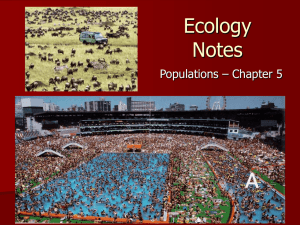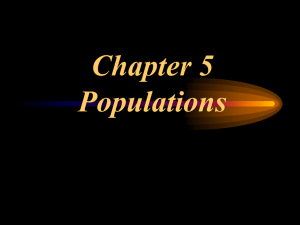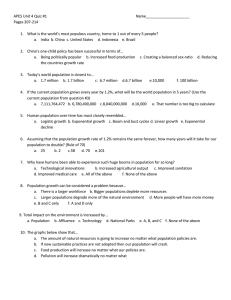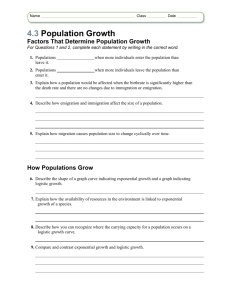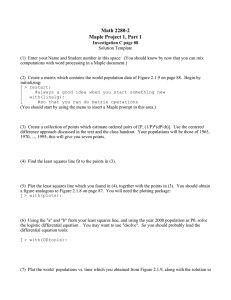Ecology Notes
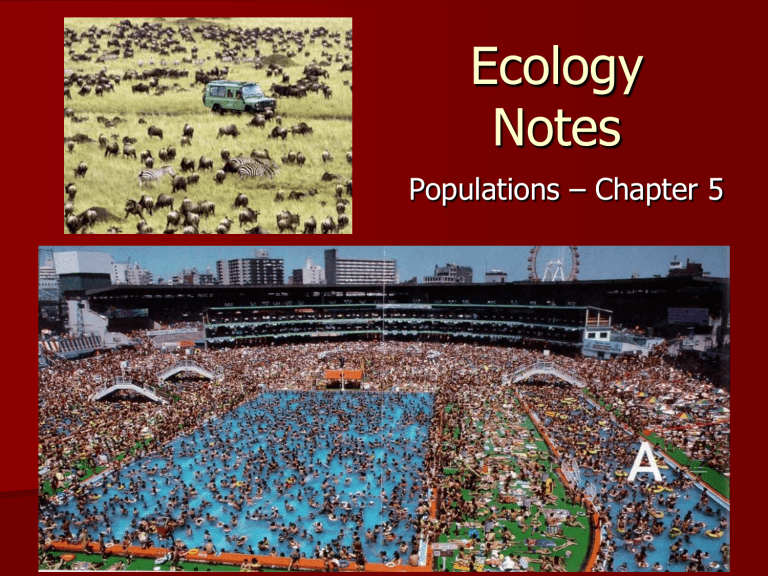
Ecology
Notes
Populations – Chapter 5
Characteristics of Populations
Population – group of individuals of the same species that live in the same area.
– 1. geographic distribution – the area inhabited by a population (range)
Population Density
2. density – number of individuals per unit area.
Area = L X W
Area = 2m X 1m
Area = 2 meters 2
Population Density
= # individuals/area
Population Density
= 6/2 = 3 rabbits per square meter
1 meters
2 meters
3. Growth – Constant or Change drastically
4 factors affect population size
1. Natality – birth rate
2. Mortality – death rate
3. Immigration – individuals IN
4. Emmigration – individuals OUT
Average Annual Change
The average rise or fall in a population per year. Can be positive or negative
Formula A.A.C.= change in pop./years
Sample Problem
What is the average annual change of this monkey population?
2001 – Rainforest 125 monkeys
2001-2005 I=10, N=7, E=8, M=3
Change =+6
Average Annual Change =
+6/4yrs.=+1.5 monkeys/year
Exponential vs. Logistic Growth
Exponential growth – population grows at a constant rate…with unlimited resources this will occur.
Logistic Growth- occurs when growth slows or stops.
The largest number of individuals the environment can support is called the carrying capacity.
Limiting Factors
Limiting factors cause population growth to decrease.
– Density dependent – a factor that depends on population size. Occurs when populations are large and dense.
Competititon
Predation
Parasitism
Disease
Density Independent Factors
A factor that affects all populations in similar ways, regardless of population size.
– Unusual weather
– Natural disaster
– Seasonal cycles
– Human activity
